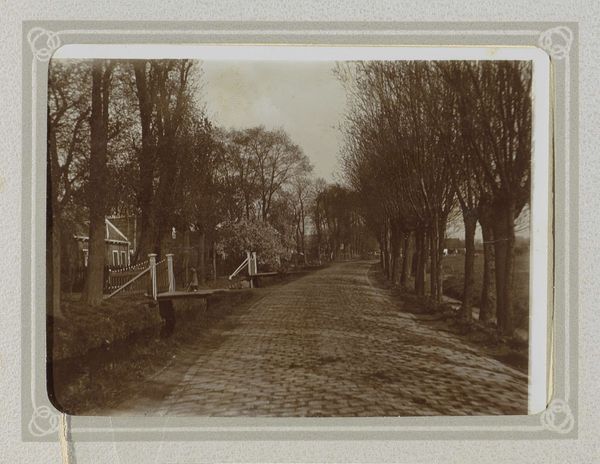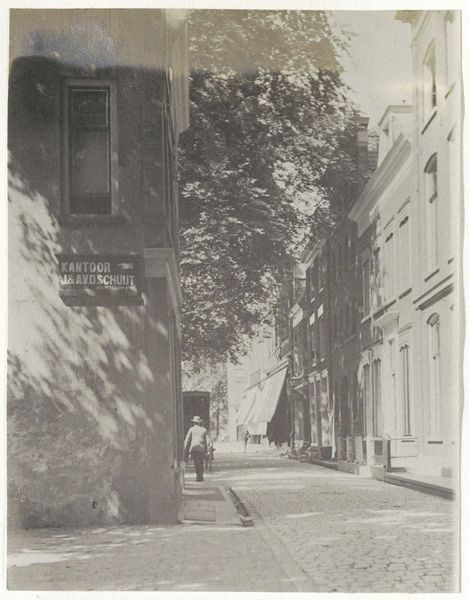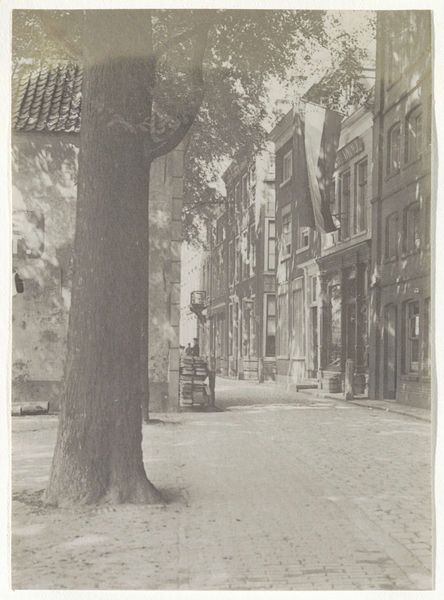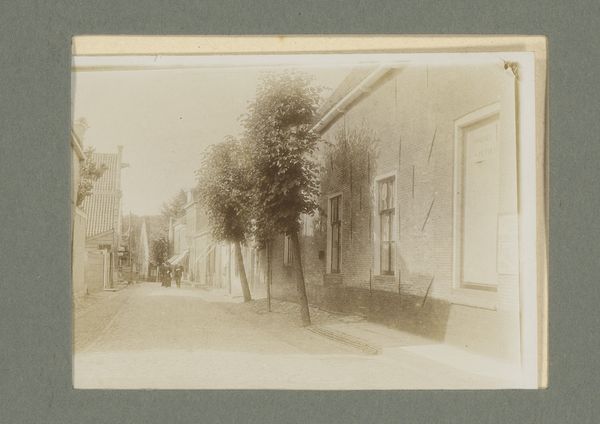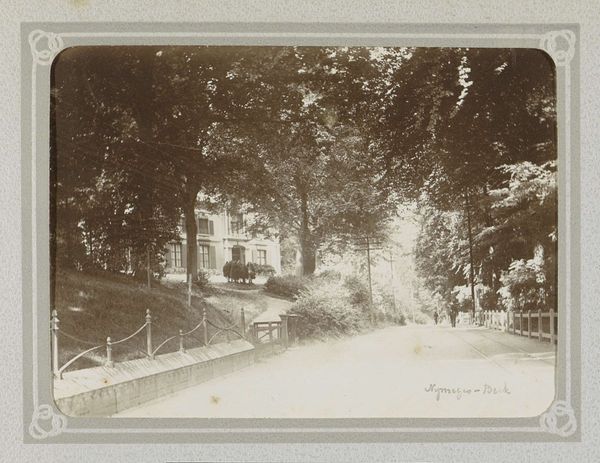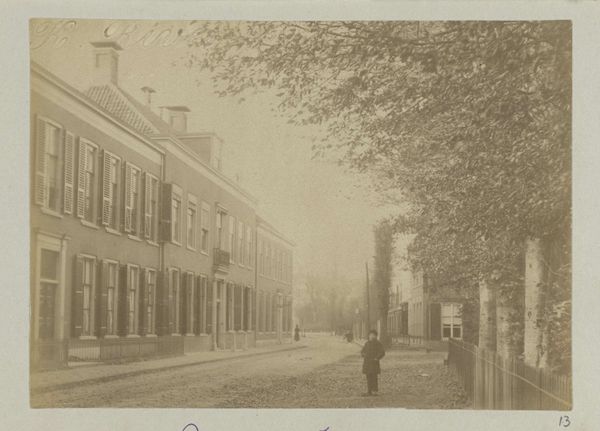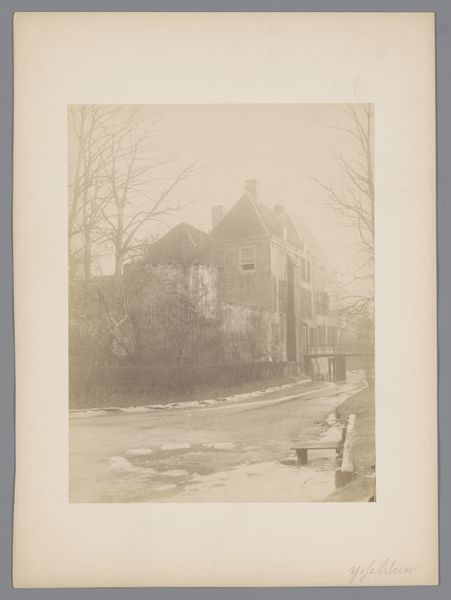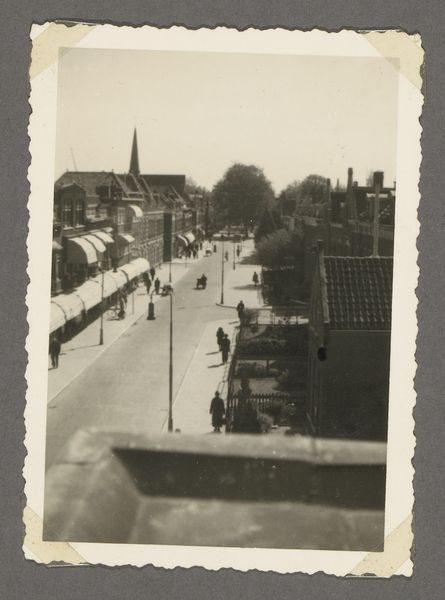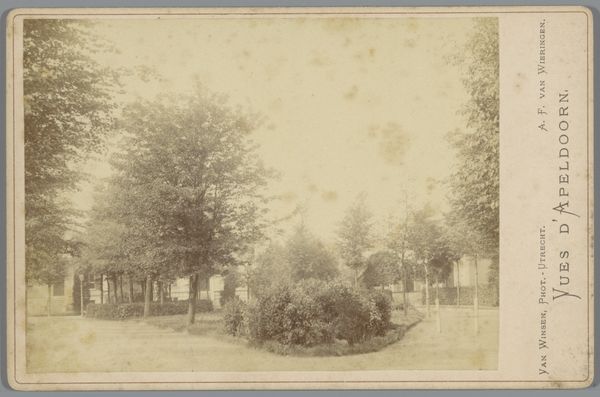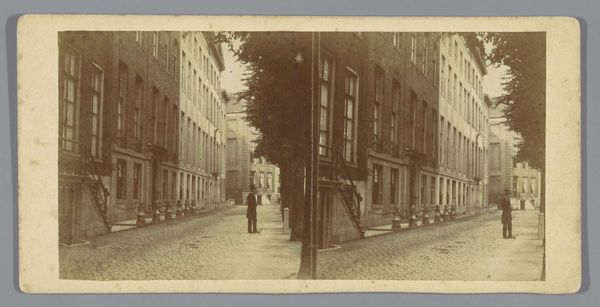
daguerreotype, photography
#
tree
#
film photography
#
landscape
#
daguerreotype
#
outdoor photography
#
street-photography
#
photography
#
monochrome photography
#
cityscape
#
film
#
street
#
realism
#
building
#
monochrome
Dimensions: 7 3/8 x 6 13/16
Copyright: Public Domain
Editor: This is "Oxford High Street" taken sometime between 1843 and 1847 by William Henry Fox Talbot, a daguerreotype photograph currently residing at the Metropolitan Museum of Art. There is a serene stillness about it. What's your read of this photograph? Curator: What I find fascinating about this image is how it reflects the burgeoning public interest in photography and the transformation of urban space. Think about the context: photography was relatively new, and Talbot was experimenting with capturing reality in a way that had never been done before. How do you think the choice of Oxford High Street as a subject speaks to its historical moment? Editor: Well, Oxford, being a center of academia, must've carried significant cultural weight. Photographing it seems like a deliberate act of documenting a place of importance and prestige. Was Talbot perhaps making a statement about the role of photography in preserving cultural heritage? Curator: Precisely. Early photography served as a powerful tool for documentation and representation, influencing perceptions of place and identity. Street photography also brought art outside the confines of galleries, to become publicly accessible. Note the scale, perspective, and tonality of this artwork. What is Talbot implicitly stating about this “street” in his vision? Editor: Now that I think about it, I do find it to be strangely empty of people, though perhaps the technical limitations of the time made photographing people challenging? Curator: Indeed. The long exposure times would make capturing moving figures nearly impossible. What appears as empty also becomes quite evocative of a moment suspended in time, influencing our interpretation of what is a “public” streetscape and how public space becomes a representation. It allows us to focus on the architecture and the atmosphere of Oxford. Editor: That's a perspective shift for me. I was initially focused on the technical aspects, but I see how understanding the socio-historical context really deepens the viewing experience. Thanks! Curator: My pleasure. It’s vital to remember that art doesn't exist in a vacuum; it is as much a product of its time as it is a reflection of it.
Comments
No comments
Be the first to comment and join the conversation on the ultimate creative platform.

